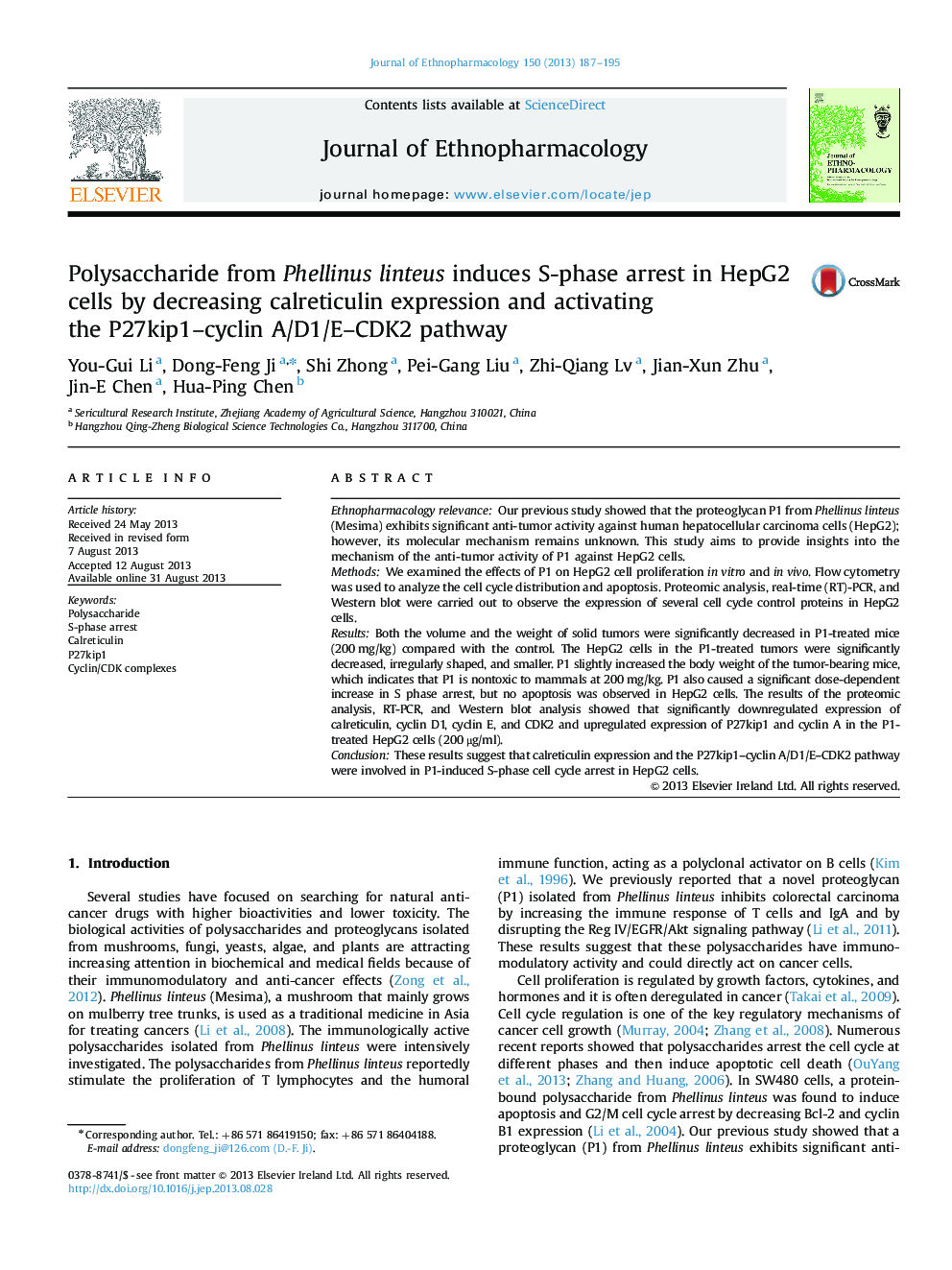| Article ID | Journal | Published Year | Pages | File Type |
|---|---|---|---|---|
| 5836942 | Journal of Ethnopharmacology | 2013 | 9 Pages |
Ethnopharmacology relevanceOur previous study showed that the proteoglycan P1 from Phellinus linteus (Mesima) exhibits significant anti-tumor activity against human hepatocellular carcinoma cells (HepG2); however, its molecular mechanism remains unknown. This study aims to provide insights into the mechanism of the anti-tumor activity of P1 against HepG2 cells.MethodsWe examined the effects of P1 on HepG2 cell proliferation in vitro and in vivo. Flow cytometry was used to analyze the cell cycle distribution and apoptosis. Proteomic analysis, real-time (RT)-PCR, and Western blot were carried out to observe the expression of several cell cycle control proteins in HepG2 cells.ResultsBoth the volume and the weight of solid tumors were significantly decreased in P1-treated mice (200 mg/kg) compared with the control. The HepG2 cells in the P1-treated tumors were significantly decreased, irregularly shaped, and smaller. P1 slightly increased the body weight of the tumor-bearing mice, which indicates that P1 is nontoxic to mammals at 200 mg/kg. P1 also caused a significant dose-dependent increase in S phase arrest, but no apoptosis was observed in HepG2 cells. The results of the proteomic analysis, RT-PCR, and Western blot analysis showed that significantly downregulated expression of calreticulin, cyclin D1, cyclin E, and CDK2 and upregulated expression of P27kip1 and cyclin A in the P1-treated HepG2 cells (200 μg/ml).ConclusionThese results suggest that calreticulin expression and the P27kip1-cyclin A/D1/E-CDK2 pathway were involved in P1-induced S-phase cell cycle arrest in HepG2 cells.
Graphical abstractProteoglycan (P1) from Phellinus linteus induced S phase arrest in HepG2 cells.Download high-res image (113KB)Download full-size image
